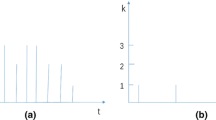Abstract
The famous Chinese scientist Professor Zeyuan Liu passed away on February 8, 2020, aged 80. He was a productive and influential scientist, both in quantitative and in qualitative studies. To cherish the memory of Professor Liu and in praise of his scientific thoughts and scientific spirit, we explored his academic career rhythm based on our rhythm indicator of science. The rhythm indicator is created based on a publication-citation matrix, eliminating the impact of length of citation windows, making citations comparable for different years. In Liu’s rhythm study the publication indicator and citation indicator are combined. Data were retrieved from China National Knowledge Infrastructure and WoS. The most important finding is that Liu’s academic career rhythm is totally different from that of two famous western scientists T. Braun and R. Rousseau. Because of the delayed scientific research by China’s Cultural Revolution, it was only in 1979 that Liu published his first scientific paper and launched his academic career. In the first 20 years he published 41 papers, mostly single-authored. Their research topics were scattered and mainly used qualitative methods. In 1999 Liu changed his research paradigm from qualitative to quantitative studies, focusing on scientometrics, citation analysis and knowledge mapping. New topics, new methods and multi-authored collaboration greatly increased his productivity (293 articles) and influence. The above exploration is based on both whole counting of publications/citations and fractional counting. Three problems, including the normalization of the p–c matrix, are discussed. The rhythm indicator of science is a contribution to the evaluation methodology for scientist-level and journal-level scientific impact.












Similar content being viewed by others
References
Chen, Y., Chen, C., Liu, Z., et al. (2015). The methodology function of CiteSpace mapping knowledge domains. Studies in Science of Science, 33, 242–253. (in Chinese).
Egghe, L., Liang, L. M., & Rousseau, R. (2008). Fundamental properties of rhythm sequences. Journal of the American Society for Information Science and Technology, 59, 1469–1478.
Hu, X. J., Leydesdorff, L., & Rousseau, R. (2020). Exponential growth in the number of items in the WoS. ISSI Newsletter, 16(2), 32–38.
Jin, B. H., Li, L., & Rousseau, R. (2004). Long-term influences of interventions in the normal development of science: China and the Cultural Revolution. Journal of the American Society for Information Science and Technology, 55(6), 544–550.
Leydesdorff, L. (1992). The organization of the semantic space of an author. Scientometrics, 60, 19–24.
Leydesdorff, L.(2002-3-8). The globalization of an author. http://Tibor-braun.fw.hu.
Liang, L. M. (2005). The R-sequence: a relative indicator for the rhythm of science. Journal of the American Society for Information Science and Technology, 56, 1045–1049.
Liang, L.M. (2007). Dear Tibor. In: Glänzel,W., Schubert, A.,Schlemmer,B.(Eds),The Multidimensional World of Tibor Braun: A Multidisciplinary Encomium for His 75th Birthday. Special volume of the e-zine of the International Society for Scientometrics and Informetrics, (pp. 5–6).
Liang, L. M., & Hou, C. H. (2010). Scientist’s rhythm of academic research presented by combining the publication and citation indicators—A case study on Tibor Braun. Journal of the Chinese Society for Scientific and Technological Information, 29(6), 145–153.
Liang, L. M., Rousseau, R., & Shi, F. (2006). The rhythm of science, the rhythm of Science. Scientometrics, 68(3), 535–544.
Liang, L. M., & Zhong, Z. (2015). The rhythm of Dr. R. Rousseau’s academic research. In W. L. Jin & X. L. Zhang (Eds.), Ronald Rousseau and the Development of Scientometrics in China (pp. 260–268). Beijing: Science Press. (in Chinese).
Liu, Z. Y., & Wang, H. S. (1981). Historical survey of the relationship between the centers of philosophy and centers of science in modern world. Science Research Management, 2(1), 9–23.
Persson, O. (2007).Tibor Braun in the galaxy of scientometrics. In: Glänzel, W., Schubert, A.,Schlemmer, B. (Eds), The Multidimensional World of Tibor Braun: A Multidisciplinary Encomium for His 75th Birthday. Special volume of the e-zine of the International Society for Scientometrics and Informetrics, (pp. 35–36).
Rousseau, R. (2007). Hungary—and Tibor Braun—on top! Dedicated to Tibor Braun on the occasion of his 75thbirthday. In: Glänzel, W., Schubert, A.,Schlemmer, B. (Eds), The Multidimensional World of Tibor Braun: A Multidisciplinary Encomium for His 75th Birthday. Special volume of the e-zine of the International Society for Scientometrics and Informetrics, (pp. 23–26).
van Raan T. (2002-3-8). Inhonour of Tibor Braun. http://Tibor-braun.fw.hu.
Acknowledgements
This work is sponsored by the National Natural Science Foundation of China. NSFC project 71603073. We greatly appreciate Professor Ronald Rousseau for his valuable suggestions and linguistic help.
Author information
Authors and Affiliations
Corresponding author
Rights and permissions
About this article
Cite this article
Liang, L., Zhong, Z. & Chen, Y. A Chinese professor’s academic career rhythm. Scientometrics 126, 6169–6186 (2021). https://doi.org/10.1007/s11192-020-03767-0
Received:
Accepted:
Published:
Issue Date:
DOI: https://doi.org/10.1007/s11192-020-03767-0



